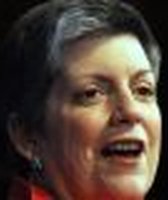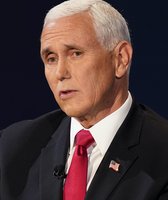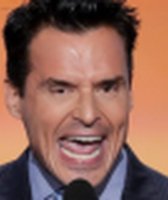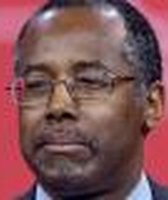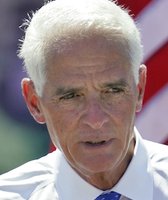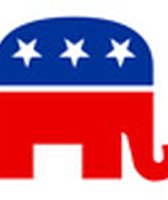Stand up for the facts!
Our only agenda is to publish the truth so you can be an informed participant in democracy.
We need your help.
I would like to contribute
Editor's note: Last spring, candidate Hillary Clinton said her extensive world travel as first lady gave her valuable experience in diplomacy. But critics belittled those claims and said she was more tourist than diplomat. So PolitiFact examined her records from every foreign trip — she visited 82 countries — and analyzed her activities. We found the truth was somewhere in the middle. She attended a lot of ceremonial events, but she also held many meetings on substantitive issues, particularly women's rights, health care and child care. Here is our report.
(Originally published April 4, 2008)
Two days after Hillary Clinton reluctantly agreed to be photographed riding on an elephant, hours after she sat through a children’s gymnastic demonstration but before tea at the ambassador’s residence, the then-first lady’s motorcade steered Clinton to a dusty Hindu village in rural Bangladesh.
It was in this village that Dr. Mohammad Yunus first established his microcredit movement, a program that seeks to reduce poverty by making small loans to poor people, mostly women.
Sign up for PolitiFact texts
Yunus’ efforts would win him a Nobel Peace Prize a decade later. But this was April 1995, and here was Clinton, "First Lady of the World," as Yunus would describe her, in a bamboo hut halfway around the world to meet with 80 women whose lives were turned around due to loans as small as $100.
Bangladesh was just one of an astounding 82 countries Clinton visited during her days as first lady, from 1993 through 2001. Clinton’s White House daily schedules recently were made public. PolitiFact reviewed her schedule on all the days she was traveling in another country to get a sense of the substance of her trips.
Locked in a tight presidential primary, now-Sen. Hillary Clinton has made much of her experience in foreign affairs, often trumpeting her travels as first lady as proof that she is better equipped to lead than her Democratic opponent, Sen. Barack Obama.
But the significance of Clinton’s travel also has been challenged. Opponents claim she’s embellishing her record. Did she really help bring peace to Northern Ireland? Did her widely praised "women’s rights are human rights" speech in China amount to much? And then the whopper: Clinton’s recounting how she once landed in Bosnia amid sniper fire, a claim first derided by comic Sinbad, who was on the trip, and later indisputably debunked by CBS file video that has now been viewed more than 2-million times on YouTube.
Clinton critics like Dick Morris, a onetime political adviser to President Bill Clinton, ridiculed her foreign agenda as little more than ceremonial fluff.
"During her international travels, there was no serious diplomacy, just a virtually endless round of meetings with women, visiting arts-and-crafts centers, watching native industries and photo opportunities for the local media," Morris wrote recently.
The White House schedules certainly show lots of that, but what emerges from a careful review is a truth that lies somewhere in between the characterizations by the competing camps. There were more weighty activities than Clinton’s critics like to believe; but little indication that the first lady played any kind of pivotal foreign policy role.
Some quick impressions:
• Clinton traveled a lot. We counted 82 countries.
• She met often with women’s groups, virtually on every trip, holding roundtable discussions that usually centered on women’s rights, health care or child care.
• After meeting with Yunus in Bangladesh that day in April 1995, using mircocredit as a tool to fight world poverty became one of Clinton’s biggest international initiatives in her travels as first lady. The issue of microcredit appears on Clinton’s schedules more than 50 times.
• She traveled nearly half the time with her husband, Bill. While traveling free of the shadow of the president, the schedules show Hillary Clinton was more free to lead a diplomatic mission. Flying solo, she met more often with heads of state and social leaders, made meaningful addresses and convened discussion groups.
In many ways, Clinton’s trip to South Asia is emblematic of her travels. For sure, there was one part ceremony — meet-and-greets with heads of state, sightseeing tours, photo ops. But as with her itinerary in Bangladesh, Clinton often used her travels as a platform to advocate for her favored causes.
"When Hillary Clinton says something, the whole world listens,’’ Yunus said after Clinton’s 1995 visit. "This will have a tremendous impact on the world’s financial system, which is basically biased against women.’’
According to Melanne Verveer, Clinton’s former chief of staff and nearly constant travel companion, the 12-day trip to South Asia, which included stops in Pakistan, India, Nepal, Bangladesh and Sri Lanka, was just one example of Clinton’s important international efforts in championing women’s and children’s issues.
But that’s not how the Calcutta Telegraph saw it at the time.
"For someone billed as one of the most able and sensitized minds of the American administration, Ms. Clinton was singularly insensate and solely decorative today," the paper stated. "She did speak a few sentences at Prayas [school]. ... But it could just as well have been Lady Diana, Jane Fonda or (Miss World) Aishwarya Rai speaking."
Clinton addressed the criticism at a speech before the Rajiv Gandhi Foundation in New Delhi.
"I recognize that discussion of such problems as education and health care for girls and women is viewed by some as ‘soft,’ labeled dismissively as a women’s issue belonging, at best, on the edge of serious debate," Clinton said. "I want to argue strongly, however, that the questions surrounding social development, especially women ... are at the center of our political and economic challenges." Clinton’s schedule, while illuminating, will not settle the debate about her foreign affairs credentials, said Bruce Miroff, a professor of political science at the State University of New York, Albany.
"It’s not just where you go and who you meet," Miroff said. "It’s what you learn when you get there. And that’s very hard to measure."
Miroff says that while the sweep and import of Clinton’s travels were certainly unprecedented for a first lady, it’s also true that she was not the commander in chief. She did not have security clearance.
That limited Clinton to advocating within her established niche: women’s rights, microcredit, children’s issues. Yes, she made a powerful human rights speech in China, Miroff said, but her experience cannot be compared to a president or even to the level a senator on the Foreign Relations Committee.
"It’s true that she traveled more than most first ladies," Miroff said. "On the other hand, it’s hardly the case that she was on the front line of U.S. international relations."
Not willing to concede the foreign "experience" mantle, Obama in November characterized Clinton’s experience as no more than having tea with world leaders.
That unfairly disparages what Clinton actually did, said Verveer, who was with Clinton on all but two of her trips.
While it’s true that Clinton did not deal with national security issues, Veveer said, she did advance U.S. interests around the globe. Verveer said Clinton also advanced the reach of microcredit and helped to promote democracy in countries that were just developing free-market economies.
"In the context of the importance of that to our country," Verveer said, "I don’t consider that fluff." And while the press often found her roundtable discussions boring, Verveer said, "it was an attempt by her to get really significant insight into what was happening in a country. It was her effort to bring together people who were making a difference in health care and education."
The trips also afforded her access to an array of leaders. In March 1995, she met with Pakistani Prime Minister Benazir Bhutto. A few days later she met with P.V. Narasimha Rao, the prime minister of India. In Eastern Europe in July 1996, she met with President Ion Iliescu of Romania and President Vaclav Havel of the Czech Republic. In a tour of Central American countries in 1998, she announced major aid packages for hurricane relief and addressed the Congress of Guatemala. In Egypt in March 1999, she met with Hosni Mubarak: The 15-minute courtesy call stretched to an hour, with Clinton expressing concern about the treatment of his country’s 6-million to 10-million Coptic Christians, according to reports from the time.
And that’s just a sampling of her far-reaching international travel. The only comparison would be Eleanor Roosevelt, the original "first lady of the world." Roosevelt also worked hard to enhance the status of working women while first lady and helped found the United Nations. She later served as a U.N. delegate and chaired the committee that put together the Universal Declaration of Human Rights. Though Clinton never held any formal position like that, a March 1997 trip to Africa with daughter Chelsea provides another example of the duality of Clinton’s purpose.
In South Africa, while she did some sightseeing and glad-handing, she also met with members of the controversial Truth and Reconciliation Commission, a panel chaired by Archbishop Desmond Tutu, that was investigating apartheid-era political crimes.
"There are people who have not taken kindly to the commission," Tutu said at the time. "To have had people like herself come in is important for enhancing public belief in the intrinsic credibility of the commission."
Tutu said Clinton talked about the role of memorials in helping a nation heal its wounds.
"It wasn’t just a courtesy chat,’’ Tutu said.
Locked as she is in a tight race with Obama, who is relatively inexperienced in foreign affairs, there is big temptation for Clinton to inflate her assets, said Michael A. Genovese, director of the Institute for leadership Studies at Loyola Marymount University in Los Angeles.
In the heat of the campaign, Genovese said, Clinton seems to have "overplayed her hand a bit."
Clinton’s recent misstatement about landing in Bosnia under sniper fire made the whole strategy backfire.
PolitiFact also found accuracy problems with Clinton’s claims that she brought peace to Northern Ireland and helped negotiate open borders for Kosovo refugees.
"In terms of real substance, the first lady seems not to have left many major footprints," said Genovese. "She wasn’t negotiating treaties. But she was discussing international events with international leaders."
And she was hammering her pet issues — children, women and health care.
"She was doing what she’s always done," Genovese said. "But she’s not going to change the world as a first lady."
Our Sources
"Hillary Clinton’s White House Schedules" in the New York Times, March 20, 2008
"Bengali Women Are Candid With Hillary Clinton," by Todd S. Purdum of the New York Times, April 4, 1995
"March 26-April 1; On the Road in Hillaryland," by Todd Purdum of the New York Times, April 2, 1995
"Hillary Clinton Talks to Poor Working Women in India," in the New York Times, March 31, 1995
"Hillary Clinton Finding a New Voice," by Todd S. Purdum of the New York Times, March 30, 1995
"Obama's Cup of Tea," by Sunlen Miller of ABC News, Dec. 28, 2007
"Hillary’s Unprecedented Experience on the World Stage," by Lissa Muscatine and Melanne Verveer for the Huffington Post, Dec. 14, 2007
"Behind Clinton’s foreign policy claims, a record of activism but questionable achievement," from the Associated Press, March 8, 2008
"Myths and Facts: First Lady Schedule," from the Fact Hub on Hillary Clinton’s campaign Web site, March 20, 2008
"Fact Check: Clinton still has no answer on ringing ad...," from Barack Obama’s campaign Web site, March 01, 2008
"Heavy Hitter? Not Hillary," by Dick Morris on DickMorris.com, March 21 2008
"U.S. first lady continues Bangladesh trip," by Toufique Imrose Khalidi and Sabir Mustafa for United Press International, April 3, 1995.
"First Lady Takes a Traditional Role; Avoiding Controversy on South Asia Trip, She Draws Fire Anyway," by Molly Moore of the Washington Post, April 1, 1995.
"U.S. First Lady Defends Emphasis on 'Women’s Issues,’" by Nancy Benac of the Associated Press, March 29, 1995
"First Lady Begins Tour Of South Asian Region; Trip Highlights Women’s, Children’s Issues," by Molly Moore of the Washington Post, March 27, 1995
"U.S. first lady praises South Africa’s racial progress," by Sonya Ross of the Associated Press, March 20, 1997
"African Tour sets First lady Apart from Detractors, Predecessors," by Jonathan Peterson for the Los Angeles Times, March 30, 1997
"First lady meets women activists in Zimbabwe," by Sonya Ross for the Houston Chronicle on March 22, 1997
Associated Press, "U.S. First Lady Defends Emphasis on 'Women’s Issues,’" (India trip) March 23, 1999
Interview with Melanne Verveer, Clinton’s former chief of staff, April 4, 2008
Interview with Bruce Miroff, a professor of political science at the State University of New York, Albany, April 3, 2008
Interview with Michael A. Genovese, director of the Institute for leadership Studies at Loyola Marymount University in Los Angeles, April 2, 2008
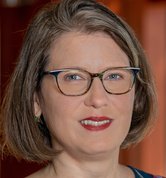
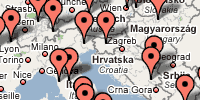 Interactive map of Hillary Clinton’s foreign trips as first lady.
Interactive map of Hillary Clinton’s foreign trips as first lady.
